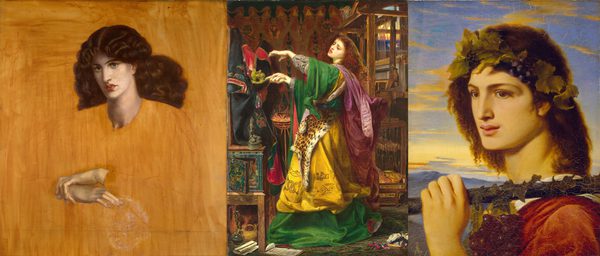News Story
Birmingham’s world-famous Pre-Raphaelite art collection to go on display in home city
- First time in over 5 years collection exhibits in Birmingham
- The Gas Hall to reopen for homecoming exhibition after US tour

Birmingham’s world-famous collection of Pre-Raphaelite art will go on display in the city for the first time in over five years in a special homecoming exhibition.
The Gas Hall, part of Birmingham Museum & Art Gallery, will reopen on February 10, 2024, for ‘Victorian Radicals: From the Pre-Raphaelites to the Arts and Crafts Movement’.
Three generations of British artists, designers and makers revolutionised the visual arts in the second half of the 19th century. The Pre-Raphaelites, William Morris and his circle and the men and women of the Arts and Crafts movement transformed art and design.
Victorian Radicals gives visitors the chance to discover the story of the Pre-Raphaelites – Britain’s first modern art movement – and their influence on artists and makers well into the 20th century.
Selected from Birmingham’s outstanding collection, Victorian Radicals presents vibrant paintings and exquisite drawings alongside jewellery, glass, textiles and metalwork to explore a radical vision for art and society. The collection also celebrates Birmingham’s historic importance as a centre for the Arts and Crafts.
The exhibition explores three generations of progressive British artists working between 1840 and 1910: the Pre-Raphaelite Brotherhood and their circle; the second wave of Pre-Raphaelite artists who gathered around Rossetti from the late 1850s, including William Morris and Birmingham-born Edward Burne-Jones; and a third generation of designers and makers associated with the Arts and Crafts movement, working from the turn of the century to just before the First World War.
In Birmingham, paintings made by artists including Kate Bunce, Joseph Southall and Arthur Gaskin combined the poetry and intensity of the Pre-Raphaelites’ work with a distinctive identity all their own. By the early 20th century, Birmingham’s School of Art was one of the most important centres in Britain for progressive art and design. Women artists were particularly significant in the School, winning national art prizes and raising the city’s profile through national and international exhibitions. They included the painter Kate Bunce and her metalworking sister, Myra; stained-glass designer Florence Camm; enameller Fanny Bunn; and embroiderer, painter and designer Mary Newill.
With more than 160 works on display, by artists such as Ford Madox Brown, Edward Burne-Jones, William Holman Hunt, John Everett Millais, William Morris, Dante Gabriel Rossetti, and Elizabeth Siddall, the exhibition’s paintings, drawings, watercolours, and decorative arts explore the relationship between art and nature and the search for beauty in an age of industry.
Organised in partnership with the American Federation of Arts (AFA), Victorian Radicals was the largest and most complex touring exhibition ever staged from Birmingham’s collection.
During its journey across the US Victorian Radicals reached some 168,000 visitors, raising the profile of Birmingham and its collection, and won a Global Fine Arts exhibition award.
Victoria Osborne, Curator of Fine Art at Birmingham Museums Trust and one of the exhibition’s co-curators, said: “We’re excited to celebrate the homecoming of Birmingham's Pre-Raphaelite and Arts and Crafts collections by opening Victorian Radicals here in the city.
“This exhibition highlights one of the great strengths of Birmingham’s collection and also highlights its importance as a centre for the Arts and Crafts movement at the end of the 19th century.
“The ‘Victorian Radicals’ believed that art and creativity could change the world and be a real force for good in society. The questions they explored in their lives and work are as relevant today as they were 150 years ago.”
While the Gas Hall reopens to visitors for Victorian Radicals, planned maintenance work continues in other areas of the Museum but several gallery spaces within the main Museum will re-open ahead of summer 2024.
The Gas Hall will also be available for conference and networking events, giving Birmingham businesses the chance to host clients among world-famous artworks. A new range of Victorian Radicals collectible gifts and reproduction artwork will be on sale in a special Gas Hall gift shop including a limited range of illustrated print products, inspired by one of the show’s headline pieces – Musica by Kate Bunce.
Sara Wajid and Zak Mensah, co-CEOs of Birmingham Museums Trust, said: “Birmingham has missed its radicals, and it has missed its museum too. By starting to reopen next year, we start a new chapter – it is incredibly exciting to be weeks away from welcoming visitors back to Birmingham Museum & Art Gallery.”
Victorian Radicals: From the Pre-Raphaelites to the Arts and Crafts Movement
The Gas Hall, Birmingham Museum & Art Gallery, from 10 February 2024 - 5 January, 2025.
This exhibition is organised by Birmingham Museums Trust and the American Federation of Arts. Supported by the Friends of Birmingham Museums.